The optimal TV size and seating distance
The optimal TV size depends on many factors such as the resolution, the size of the TV, the viewing angle on the TV or simply your personal taste. Here you can find out what is important for the ideal TV size and you not only have the possibility to determine the perfect seating distance to your TV, but also the right TV size specifically for your situation.
TV Size Calculator
With the help of our tvfindr TV size calculator, you can easily calculate the optimal TV size or the ideal seat distance yourself:
What is important in the TV size?
Of course, the greater the distance, the larger the TV must be, and vice versa. This is because a TV that is too large, in correlation to the distance, can result in a loss of picture quality, even when viewed straight on. This is because the edge of the screen is already viewed at an angle if the TV is too large. In return, however, it should of course not be too small either, so that the whole picture can be seen clearly.
But what other factors play into this to determine the ideal TV size?
View on the TV
The viewing angle on the TV determines the distance from the TV to the viewer or the size of the TV. If viewed at too much of an angle, blacks may change and appear brighter than they should, colors may fade or change slightly, and the overall brightness of the TV will decrease.

Of course, all these factors do not start from a precisely determinable viewing angle, but relative to how obliquely you look at the TV.
This does not necessarily mean a slanted position to the TV, which is detrimental to the picture quality, but also a TV that is too big. In this case, the outer edges of the TV may be at an angle to the viewer if the viewer is too close or if the TV is too large, even if the viewer has a straight line of sight. To prevent this, the distance between the seats must be adjusted to the size of the TV.
Furthermore, the display technology used in the TV is included in the rating when it is considered to be a slanted view.
This is because OLED TVs, for example, have a very wide viewing angle and VA LCD TVs only a very limited one, at which the picture quality remains stable.
In addition to the minimized image quality that results from televisions being viewed at too great an angle, the perception of the human eye also plays a role. The so-called field of view, which corresponds to the area that we can visually perceive without moving our head or eyes, is about 214°, with about 35° being well and simultaneously recognizable. Accordingly, the TV should fall within these parameters to ensure a relaxed overview of the entire TV.
The different effects of the TV size
The effect you want the TV to have on the viewer can and should also factor into the choice of the ideal TV size.
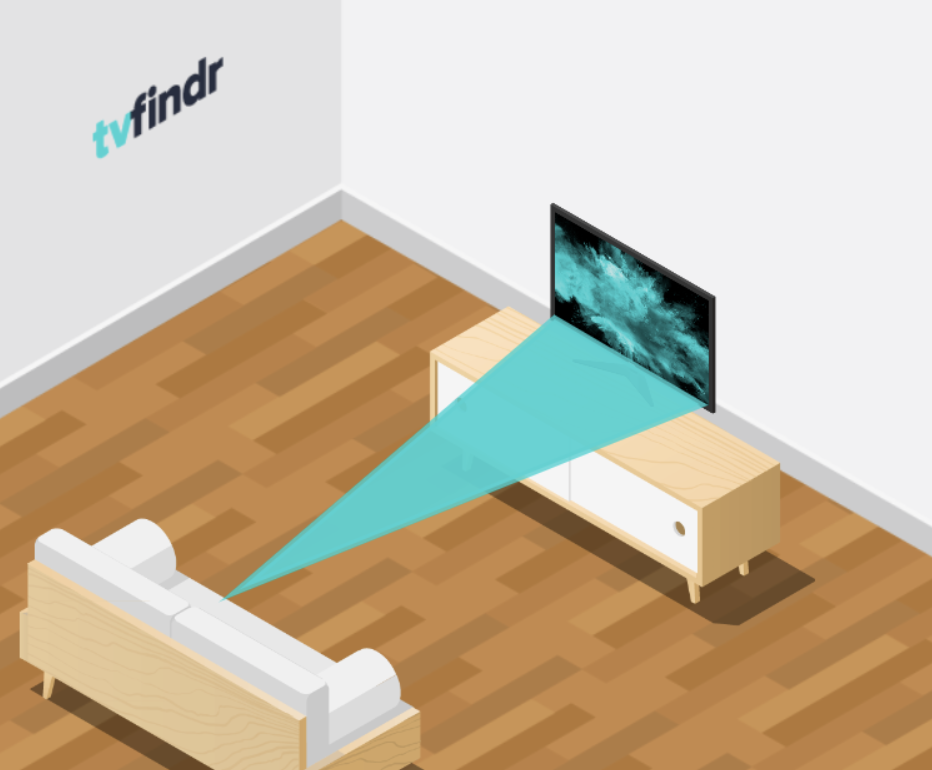
These range from small, space-saving TVs to help out in the kitchen to grandiose-looking TVs in your own home theater.
Accordingly, you should consider a smaller TV for desktop use, for example, and a larger one for the family TV — of course in connection and correlation with the distance to the TV, but also according to the use of the TV.
The effect of the TV on the viewer results from the angle from the viewer to the edges of the TV. Here, 28-33° is perceived as the regular TV size and thus a correspondingly large TV is recommended for most applications.
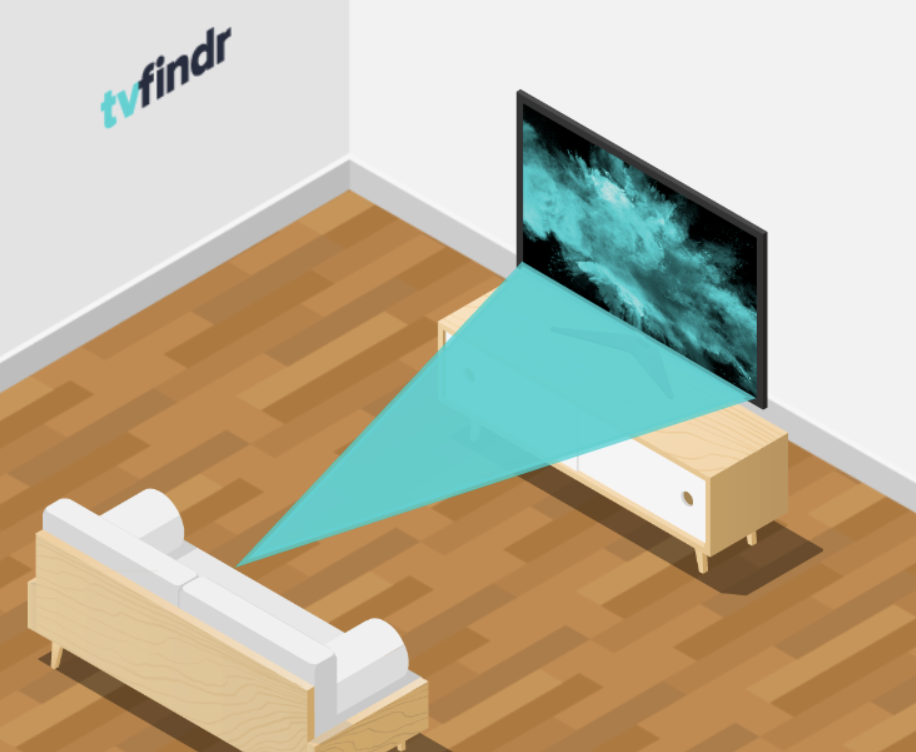
At a viewing angle below 28°, the TV is perceived as too small and is therefore not recommended for watching series and movies. Details could already be lost here and subtitles are difficult or even impossible to read.
From an angle of 33°, the TV starts to look relatively large and the immersion increases. Here, the TV already starts to resemble a screen, which makes your favorite movies and series appear even more spectacular. This effect continues up to an angle of 42°, where you can really speak of a home theater TV.
A viewing angle of 43° or more should only be considered for very few types of use. You could use an appropriately sized TV for gaming with several people, where the screen is shared, for example in couch co-op games.
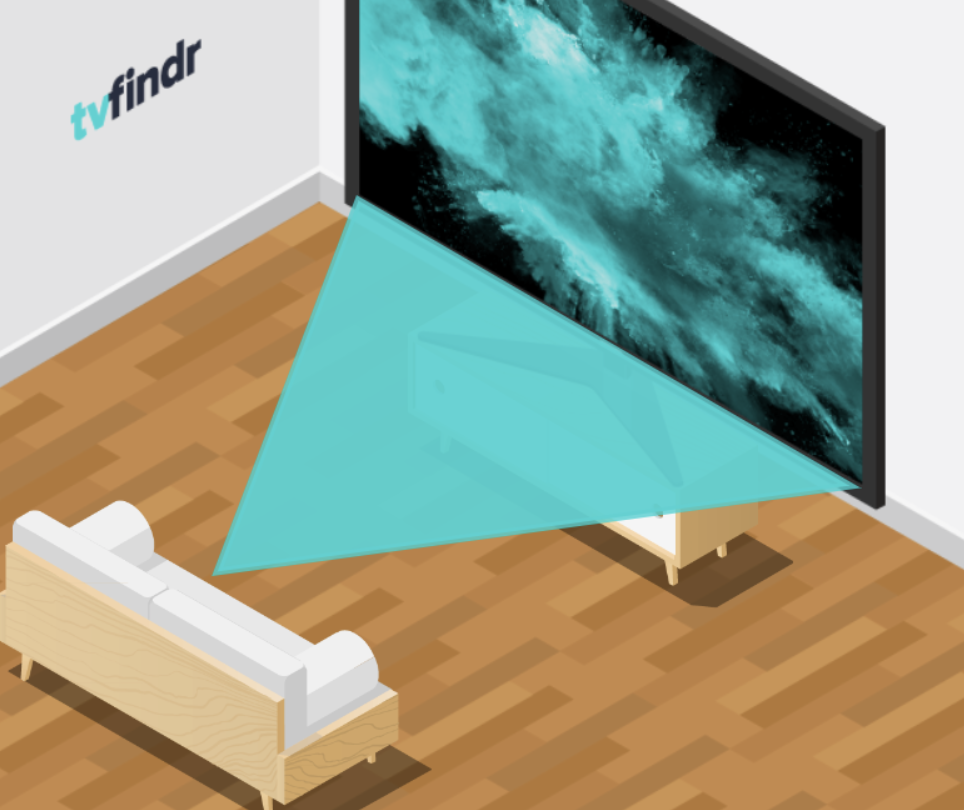
If the TV were to be used alone with such a wide viewing angle, you would either have to sit uncomfortably close to the TV or buy an extremely large TV, which would then also cost accordingly.
In addition, corresponding TV sizes are extremely rare for a seating distance of 3 meters, for example. Here, televisions start at 100 inches, which currently have no great need or use among private consumers and are extremely expensive.
From an angle of 52°, the TV size is comparable to a cinema screen in the front row, which probably appeals to the fewest. These are currently exorbitantly expensive, not accessible for the average consumer, but also in most cases simply disproportionately large for any use.
The correct TV size, depending on the effect and seating distance, is calculated using the Pythagorean theorem, but you can easily find your optimal TV size or seating distance, depending on the desired effect, by using our calculator above.
Distance from the TV to the wall
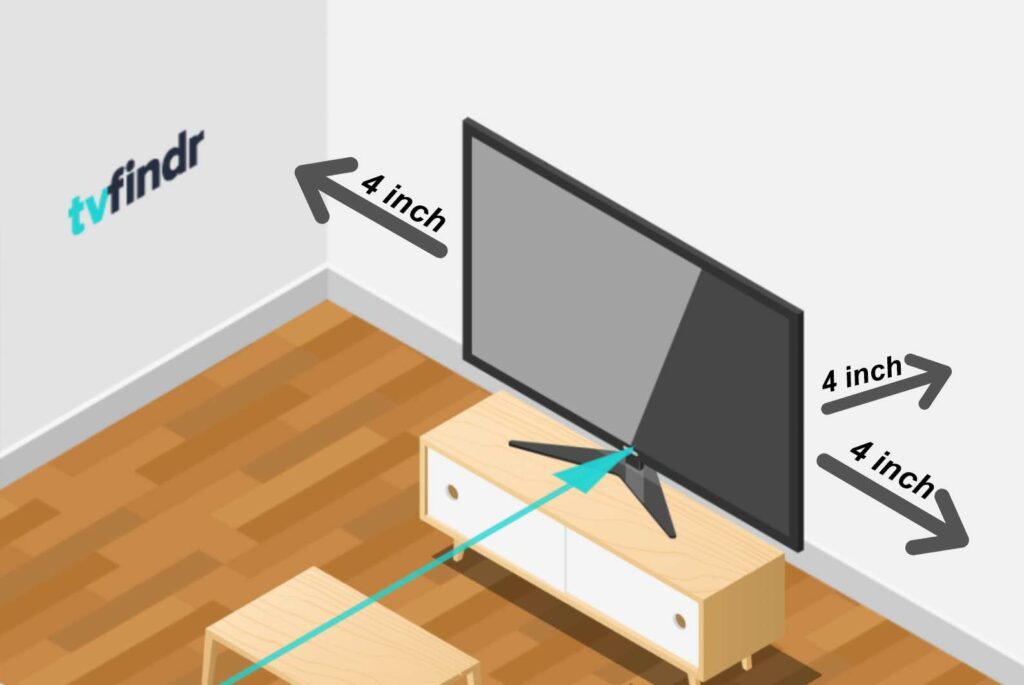
Not only the distance from the viewer to the TV is relevant, but also the distance from the TV to the interior or wall is crucial.
This is because the TV itself also needs sufficient space: The guideline here is a minimum of 4 inches from surrounding walls or furniture — this ensures optimum ventilation and prevents above-average heat production.
Exceptions are TVs with integrated Ambilight, i.e., Philips TVs. According to Philips, the optimal Ambilight effect is achieved at a distance of 10 inches from the wall and a minimum distance of 6 inches is specified.
TV Size Chart
| Seating distance | Minimum size | Recommended size | Maximum size |
| 6.5 feet | 32 Inch | 48 Inch | 65 Inch |
| 8 feet | 40 Inch | 65 Inch | 83 Inch |
| 10 feet | 48 Inch | 77 Inch | 86 Inch |
| 11 feet | 55 Inch | 83 Inch | 98 Inch |
| 13 feet | 65 Inch | 83 Inch | 100+ Inch |
| 15 feet | 70 Inch | 86 Inch | 100+ Inch |
| 16 feet | 75 Inch | 100 Inch | 100+ Inch |
Frequently asked questions about TV sizes
What are the sizes of TVs?
The range of TV sizes extends from small 24-inch TVs, which are more suitable as monitors, to massive 110-inch TVs, such as the Samsung MicroLED TVs, which are composed of many modular blocks. Currently, these are still extremely expensive and not accessible to the average consumer.
Which seating distance for a 55-inch TV?
For a long time, 55-inch TVs were the standard when it came to TVs for the living room. These TVs have a screen diagonal of about 140 centimeters. The recommended distance is 5.6 to 11.48 feet.
What seating distance for a 65-inch TV?
The 65-inch size is considered the new norm in the living room. 65-inch TVs have a screen diagonal of around 165 centimeters and the ideal seating distance is 6.6 feet for a home theater TV, for example, to 13.5 feet if an inconspicuous TV is preferred.
At what point is an 8k TV worthwhile?
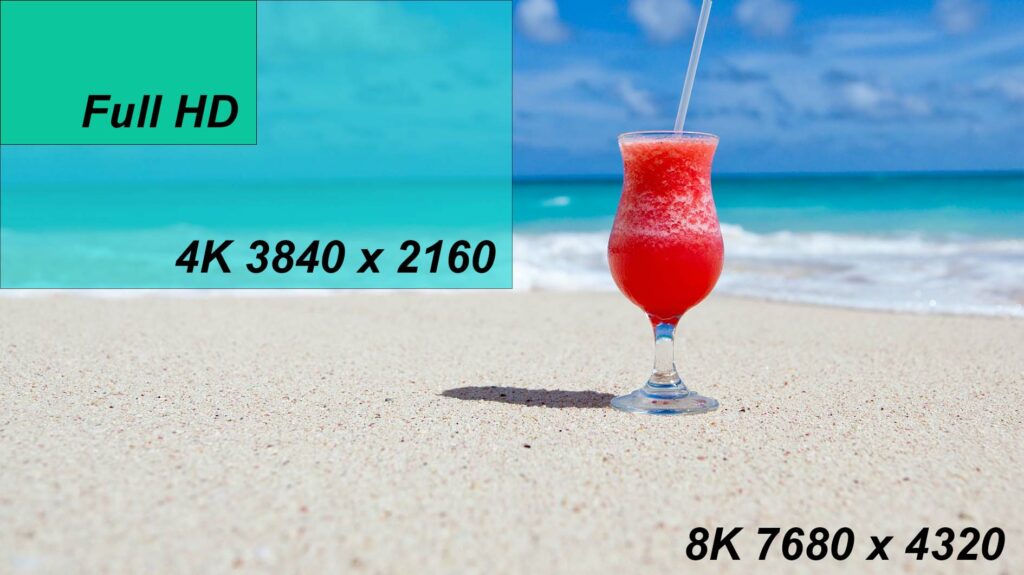
Most TVs nowadays have UHD or respectively a 4K resolution. Even with these TVs, you would have to sit comparatively close to the TV to see individual pixels or flaws in the picture quality. 8k resolution TVs allow you to sit even closer to the TV without reaching the limits of the resolution, which only makes them worthwhile for very close viewing.
You would already have to be so close to the screen that this is perceived as rather uncomfortable. It is comparable to the first rows in the cinema – although you sit in front of an enormously large picture, most people prefer the middle or even back rows. However, you don’t see any differences between 4K and 8K in those. Thus, you have to consider a really big TV to make a TV with an 8K resolution worthwhile, and then you pay a considerable premium for a very limited added value.

